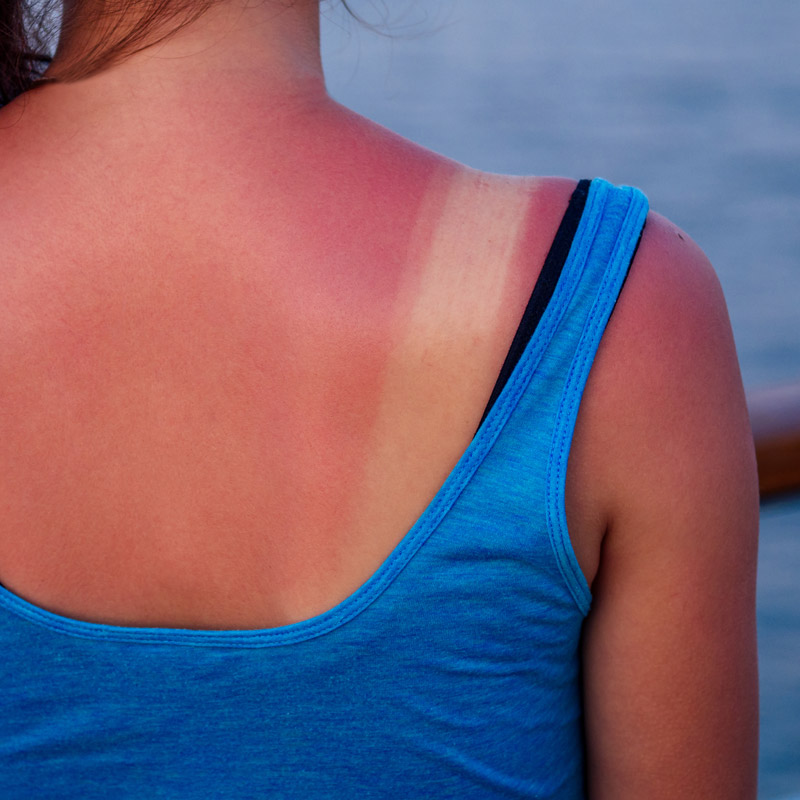Photosensitivity is when your skin reacts negatively to sunlight or UV rays. It causes an itchy, painful rash. Unlike a sunburn, symptoms can appear within minutes. If you notice a reaction after minimal sun exposure, talk to a healthcare provider about treatment options.
Advertisement
Cleveland Clinic is a non-profit academic medical center. Advertising on our site helps support our mission. We do not endorse non-Cleveland Clinic products or services. Policy

Photosensitivity is your skin reacting negatively to sunlight or other sources of ultraviolet (UV) radiation.
Advertisement
Cleveland Clinic is a non-profit academic medical center. Advertising on our site helps support our mission. We do not endorse non-Cleveland Clinic products or services. Policy
The most common reaction is an itchy, painful and swollen rash. This forms on areas of your skin that have sun exposure. In some cases, these patches will be so well defined that they follow the outline of sleeves, pant legs or your hair.
Photosensitivity isn’t the same as a sunburn. While everyone should limit sun exposure and use sunscreen, photosensitivity reactions may happen within minutes of UV exposure.
If you have symptoms after very little sun exposure or feel like you get reactions that are more severe than usual from a limited amount of time outdoors, talk to a healthcare provider. Treatment options are available.
You may experience a patch of skin with the following characteristics:
If you have sun exposure on a large area of your skin, you might have the following symptoms:
Contact a healthcare provider right away if you notice any of these symptoms.
There are two types:
Advertisement
Common causes of photosensitivity include:
No matter what’s causing your photosensitivity, make sure to talk to a healthcare provider if you notice any changes to your skin.
Treatment varies based on the cause, but it may include:
Photosensitivity might be a lifelong issue that you need to manage. Or it may be something you only need to treat a few times.
What’s causing your symptoms greatly impacts how long it will last. For example, if photosensitivity is the result of a new medication or starting a new skin care regimen, you might never have another reaction after switching to different products. On the other hand, if photosensitivity is caused by an autoimmune or genetic condition, you may need to practice lifelong management techniques.
Your provider will help you understand your specific case and what you can do to reduce how much photosensitivity impacts your life.
Not all cases can be prevented, especially those caused by underlying conditions.
But you can reduce your risk of photosensitive reactions by:
Advertisement
Talk to your healthcare provider to establish a baseline for photosensitivity symptoms. They’ll help develop a prevention plan or routine.
If you ever have a severe reaction to UV radiation, you should see a provider right away. Look out for these symptoms:
The world around you might feel a little too bright when you’re living with photosensitivity. It isn’t practical to always stay indoors, but you risk a rash when you step outside. Fortunately, you don’t have to navigate these symptoms alone. A healthcare provider can help you figure out what’s causing the reaction. It could be as simple as changing your skin care routine or making an adjustment to your medications. Or they’ll help you create a long-term treatment plan so you can go outside with confidence.
Advertisement
Last reviewed on 03/24/2025.
Learn more about the Health Library and our editorial process.